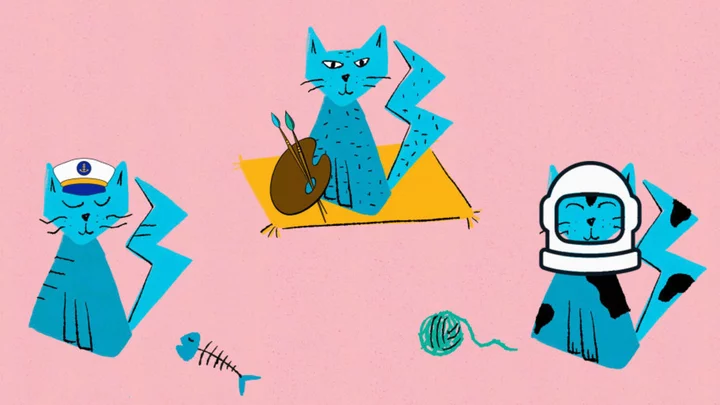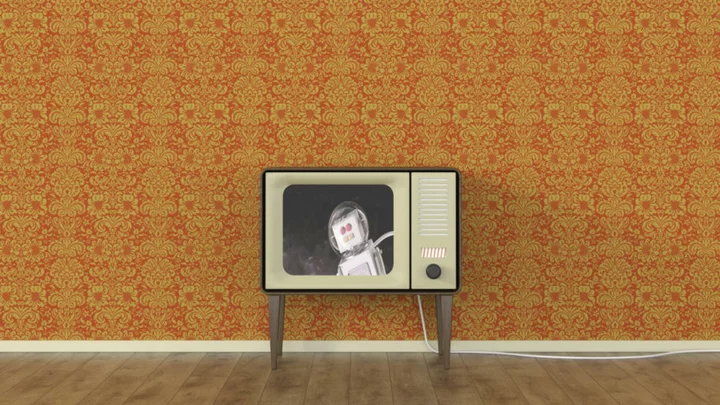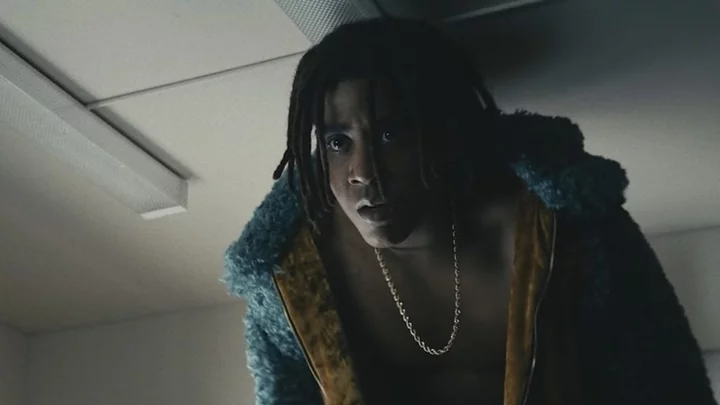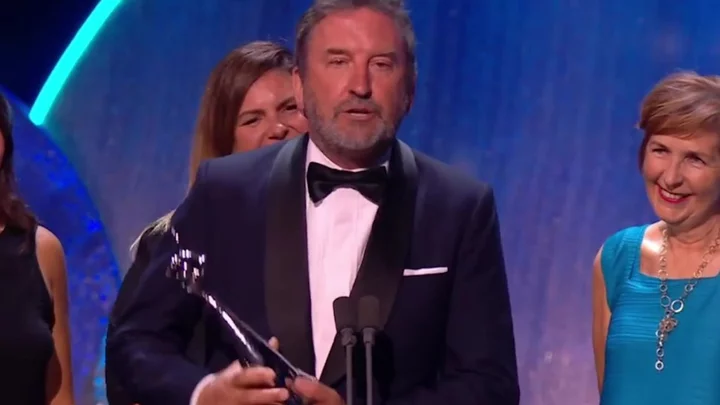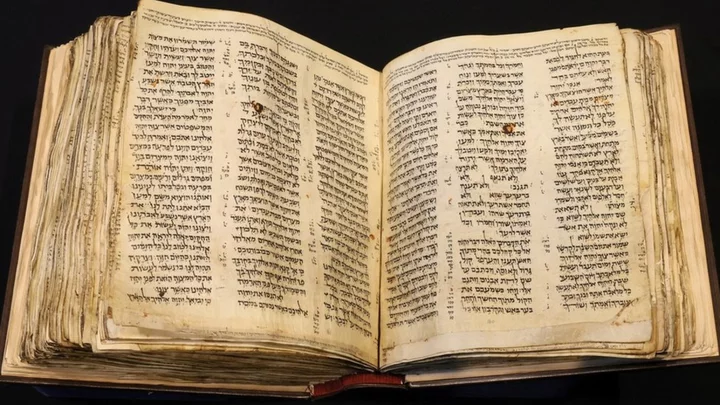Anyone with a cat will probably argue that their feline is the coolest—but there have been at least a few other candidates through the ages, from Able Seacat Simon to Abraham Lincoln’s kitties to the feline that inspired Nikola Tesla. Read on to find out all about them and other cool cats from history.
1. Unsinkable Sam
Cats may not actually have nine lives, but Unsinkable Sam proved he had more than one. As the story goes, the black-and-white cat was aboard a German battleship called the Bismarck that Allied forces sank in May 1941. Sam somehow survived, and later found himself aboard the HMS Cossack, a British ship. That vessel was then torpedoed by a German U-Boat, but the feisty feline again made it out alive. Sam had miraculously lived through two shipwrecks in just five months—and there was still another to come. In November 1941, the cat was aboard the HMS Ark Royal, an aircraft carrier, when it, too, was torpedoed. Sam was found during the rescue efforts and was said to have been “angry but quite unharmed.” He later retired from military service and spent his final years living safely on land.
2. Able Seacat Simon
Some historians doubt that Unsinkable Sam was actually a single cat, and not a number of different kitties united by a single legend. But that’s not an issue with our next feline with a storied military past. Able Seacat Simon was a black-and-white cat who served on the HMS Amethyst in 1948 when the British vessel was in Hong Kong. The next year, while the ship was en route to guard the British embassy during the Chinese Communist Revolution, the People’s Liberation Army attacked, and the Amethyst ran aground. Simon was injured during the assault, but that didn’t stop him from playing an important role during the 101-day long siege. He kept the ship’s rat population at bay, preventing the rodents from devouring the limited food supply. After the siege ended and the crew returned to England, Simon was awarded the Dickin Medal for animal bravery. He’s the only cat to have ever received that honor.
3. and 4. Dixie and Tabby
Not all cats who served their country did so in the military. Though there probably have been cats prowling around the White House for as long as there have been first families on the premises, the historic mansion didn’t house any official first cats until Abraham Lincoln took office. The president was gifted two kittens from Secretary of State William Seward. Lincoln became smitten with the kittens, naming them Tabby and Dixie. The two cats lived luxurious lives and were held in high regard: Lincoln once let Tabby dine at the table during a formal dinner, and he reportedly remarked that Dixie was “smarter than my whole cabinet.”
5. Félicette
Félicette went where no cat had ever gone before: space. She was one of several cats chosen for France’s Centre d’Enseignement et de Recherches de Médecine Aéronautique (CERMA) training program. Félicette, also known as subject C 341, was put through a rigorous training program (which we would love to see footage of) and ultimately came out on top. In October 1963, she was strapped inside a rocket and sent into space, reaching about 100 miles above the planet’s surface. Fifteen minutes later, she was safely back on Earth. Sadly, Félicette was killed a few months after her historic journey so researchers could study how space travel had affected her brain. In 2020, a memorial was erected in her honor.
6. Chester, a.k.a. F.D.C. Willard
Chester’s contributions to science end on a less depressing note. He’s the co-author of a very influential physics paper—though he didn’t actually do any work. Michigan State University physics professor Jack Hetherington wrote a paper about atomic behavior that wound up getting published in the journal Physical Review Letters in 1975. Before sending it in, Hetherington was told by a colleague it would be rejected because he had used the word we rather than I throughout the paper, even though he was its only author. Rather than go through and make the edits, he simply tacked on another author: F.D.C. Willard, who was really Chester. F.D.C. stood for Felix Domesticus, Chester; Willard was the cat’s dad. Hetherington’s deceit didn’t stay a secret for long, but people weren’t mad: “Everyone laughed and soon the cat was out of the bag,” he said. Chester was the sole author of a paper about solid helium that was published in a French popular science magazine in 1980, again under the name F.D.C. Willard. He was also invited to join Michigan State University’s physics department. As the department chair wrote in a letter, “Can you imagine the universal jubilation if in fact Willard could be persuaded to join us, even if only as a visiting distinguished professor?”
7. Mačak
Mačak is another cat to whom science owes a debt of gratitude. He was the childhood pet of Nikola Tesla. The famous scientist loved Mačak, even calling him “the finest of all cats in the world.” In addition to being a loyal companion, the cat quite literally sparked Tesla’s interest in electricity. As Tesla recalled in a letter, “In the dusk of the evening, as I stroked Mačak’s back, I saw a miracle that made me speechless with amazement. Mačak’s back was a sheet of light and my hand produced a shower of sparks loud enough to be heard all over the house.” His father explained that electricity was to blame. But Tesla continued to ponder the incident: “I was thinking abstractedly,” he wrote. “Is nature a gigantic cat? If so, who strokes its back?” These are the questions scientists need to be asking. Tesla carried that curiosity with him for decades, eventually contributing to his groundbreaking work with electric power.
8. Peter
Cool cats didn’t just influence science. Some left their pawprints in the arts as well. After the 19th-century artist Louis Wain’s wife, Emily, became sick from breast cancer, he adopted a kitten named Peter that he soon started sketching. He realized he liked drawing cats and continued to incorporate them into his art. The felines in Wain’s illustrations grew more anthropomorphic as time went on. They played games, got drunk, and did all sorts of other human activities. His cat drawings were a huge hit in Victorian England.
9. Pangur Bán
Cats have been inspiring writers for centuries. One 9th-century Irish monk penned a poem about his beloved pet, a white cat named Pangur Bán. The poem was written in Old Irish, though it has been translated many times. Based on what the monk wrote about Pangur Bán, we know he was both playful and a keen hunter.
10. Calvin
Calvin was a Maltese cat who wandered into author Harriet Beecher Stowe’s home and never left. When Stowe moved to Florida for the winter, she sent Calvin to her friend Charles Dudley Warner. The cat left a great mark on Warner. After Calvin died, Warner wrote a long, touching obituary that he included in later editions of his book My Summer in a Garden. The piece began, “CALVIN is dead. His life, long to him, but short for the rest of us, was not marked by startling adventures, but his character was so uncommon and his qualities were so worthy of imitation, that I have been asked by those who personally knew him to set down my recollections of his career.” Warner went on to remark that Calvin “had absolutely no bad habits, and his disposition was perfect.”
11. Bambino
Mark Twain’s daughter Clara Clemens smuggled a black kitten into the sanatorium she was staying in. The cat, whom she named Bambino, was her companion during an otherwise lonely stretch of time. But after Bambino nearly gave one anti-cat resident what Clara referred to as “a cataleptic fit,” she had to get rid of the kitty and gave him to her dad. Bambino was quite clever—according to Twain’s servant, the author had trained the cat to wash his own face and turn off a lamp on command.
12. Pepper
Pepper went from the streets to the silver screen. The Maltese cat was born beneath the sound stage at Keystone Studios in 1912. It was a fortuitous location: The actor Mack Sennett found Pepper and included her in the 1913 movie A Little Hero. She became the first feline movie star, and went on to appear in a number of other films.
13. All Ball
In 1984, Koko the gorilla was offered the ultimate gift: a kitten. She chose a gray and white female cat and named her All Ball, using the modified American sign language she had been taught to communicate with humans. Koko loved spending time with All Ball, and played with her daily. “The cat reacted to her as she would a human, but she was pretty independent and would bite Koko or wriggle loose when she got tired of being babied,” Ron Cohn, a biologist who worked with Koko, once said. Koko was devastated when All Ball died after being run over by a car. When her caretakers told her about All Ball’s death, Koko whimpered with sadness. A few days later, she signed the words “Sleep. Cat.”
14. Oscar
Here’s a cat who was both cool and pretty chilling. Oscar was one of several therapy cats at the Steere House Nursing and Rehabilitation Center in Providence, Rhode Island. He wasn’t the friendliest therapy cat. But he had an unsettling ability to sense death. Oscar would curl up at a resident’s side a couple of hours before they died. The staff would pay close attention to the cat’s whereabouts; if they noticed him spending time with a particular patient, they would contact that person’s loved ones to let them know death was at the door. We still haven’t figured out how Oscar knew when people would die. The cat himself passed away in February 2022 at age 17.
15. Creme Puff
Creme Puff had an extraordinarily long life. She lived to an astonishing 38 years old—that’s a solid two decades over the average lifespan of a cat. Creme Puff died in 2005 after spending decades living in Austin, Texas. She remains the oldest cat ever recorded.
16. Lil BUB
Lil BUB was one of the most famous cats of the 2010s, and though her life was short, she left behind a lasting legacy. BUB was famous for her adorably unusual appearance, a result of feline dwarfism and osteopetrosis. And though her mobility was limited, that didn’t stop her from meeting fans and raising awareness for special needs animals: Bub and her owner raised money for other pets with special needs. Though Lil BUB died in 2019, an organization called Lil BUB’s Big Fund continues to support the cause.
17. Tombili
We’ll end with a cat who was the very definition of cool. Tombili was one of Istanbul’s many street cats, and was beloved by locals—as evidenced by her portly stature. Tombili liked to lounge around the city’s Ziverbey neighborhood. A photo of her in her signature pose—slouched to the side and utterly relaxed—catapulted the cat to internet fame. After Tombili died in 2016, a statue of her was erected within Istanbul. The memorial was stolen not long after, but it was returned following a large public outcry.
This story was adapted from an episode of The List Show on YouTube. Subscribe for new videos every week.
This article was originally published on www.mentalfloss.com as 17 of History's Coolest Cats.

